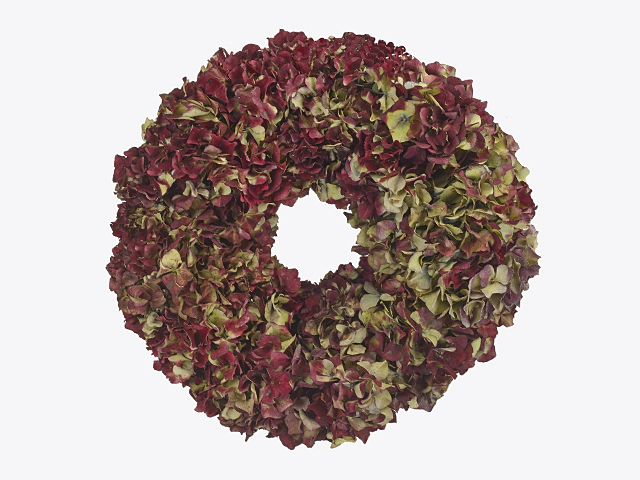Wreath Hydrangea macrophylla

Hydrangea macrophylla, commonly known as wreath hydrangea, is a beautiful flowering plant that captivates garden enthusiasts with its stunning blooms and lush foliage. This popular ornamental shrub belongs to the Hydrangeaceae family and is native to Japan. Its captivating appearance and versatility in landscaping make it a favored choice for both gardens and indoor floral arrangements.
The wreath hydrangea is known for its large, showy flower heads, which can reach up to 6 inches in diameter. The flowers come in a wide range of colors, including pink, blue, purple, and white, and often change color depending on the pH level of the soil they are planted in. This color-changing ability is what makes the wreath hydrangea particularly fascinating and sought after by gardeners.
In addition to its vibrant flowers, the wreath hydrangea boasts large, glossy green leaves that provide a beautiful backdrop to the blooms. The foliage remains attractive throughout the year, even when the flowers have faded, making it an excellent choice for adding structure and texture to a garden.
One of the reasons why the wreath hydrangea is a popular choice for landscaping is its ability to thrive in a variety of growing conditions. It prefers partial shade but can tolerate full sun or light shade as well. It requires well-drained soil and regular watering, especially during dry periods. With proper care, this hardy shrub can survive in USDA hardiness zones 6 to 9.
Another advantage of the wreath hydrangea is its versatility in design. These plants can be trained to grow as small trees, shrubs, or even climbers, offering endless possibilities for creative gardeners. They can be used as focal points in flowerbeds, borders, or hedges, and their impressive flowers make excellent cut flowers for floral arrangements and wreaths.
To maximize the blooming potential of the wreath hydrangea, it is essential to understand the plant's needs. Pruning should be done in late winter or early spring before new growth begins. Deadheading spent flowers can encourage the plant to produce new blooms. Additionally, it is crucial to adjust the pH level of the soil to achieve the desired flower color. To make the soil more acidic for blue flowers, add aluminum sulfate or acidic compost. To make it more alkaline for pink flowers, apply lime or alkaline compost.
With its eye-catching flowers, lush foliage, and adaptability, the wreath hydrangea is undeniably a must-have for any garden. Whether used as a focal point or as part of a larger design, this versatile shrub is sure to enhance the beauty and charm of any outdoor space. So why not consider adding a wreath hydrangea to your garden and enjoy the beauty it brings year after year?
Market availability index by month:
| Jan. | Feb. | Mar. | Apr. | May | Jun. | Jul. | Aug. | Sep. | Oct. | Nov. | Dec. |
|---|---|---|---|---|---|---|---|---|---|---|---|
| - | - | - | - | - | - | - | 2 | 4 | 3 | 2 | 2 |